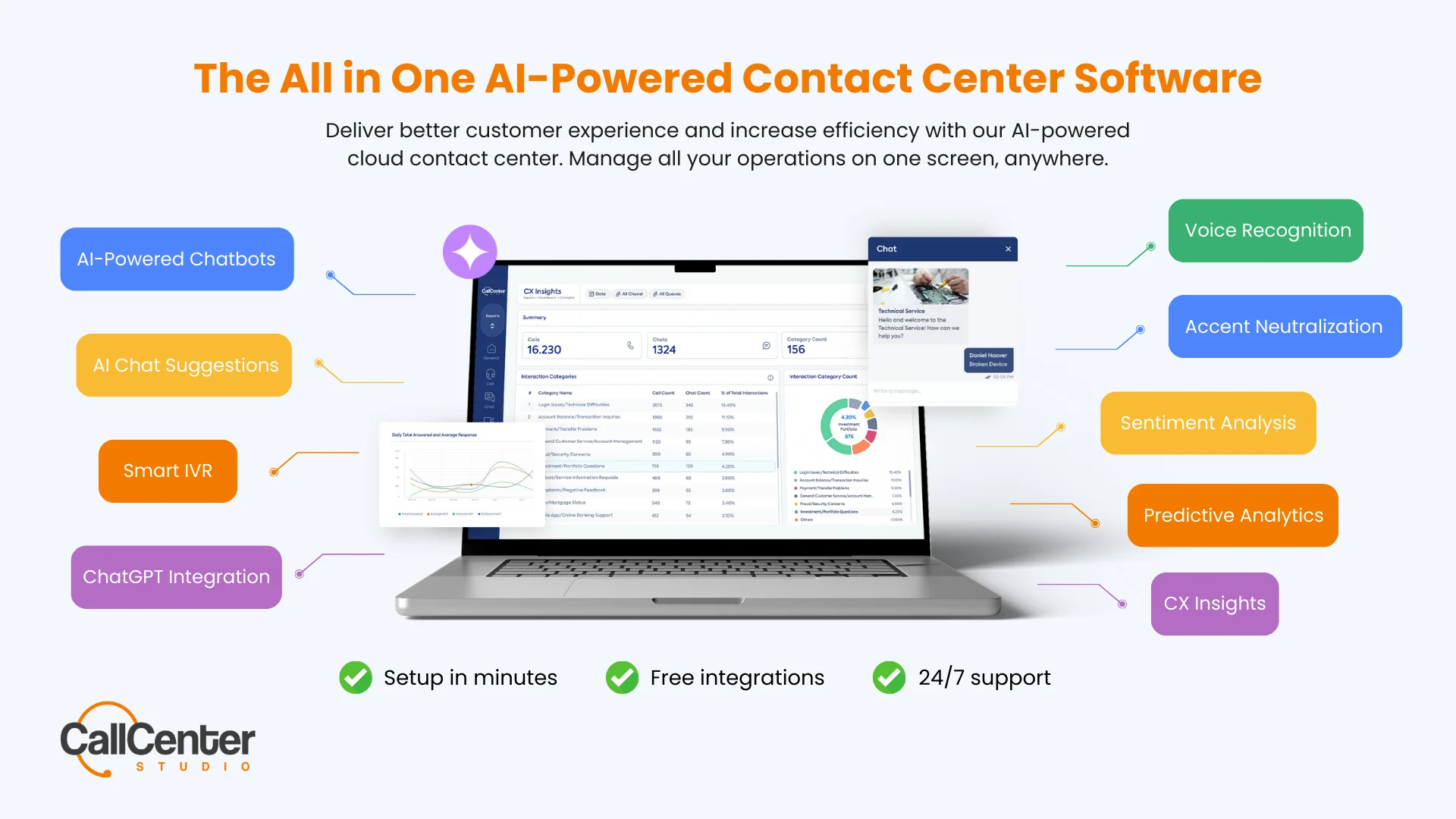The word sentiment comes from the Latin sentire, meaning “to feel.”
It’s not just about thoughts, it’s about emotions, the nuanced human reactions that shape every interaction.
And empathy… It’s the ability to feel with someone. Empathy picks up the signals that sentiment sends out.
Together, these two form the foundation of sentiment analysis: a method of reading between the lines to understand emotional undercurrents in communication.
It helps you understand not just what customers say but also how they feel when they say it.
TL;DR
- Use sentiment analysis to detect customer emotions in real time
- Train agents to respond empathetically and prevent issues from escalating
- Leverage emotional insights to personalize service and boost satisfaction
- Analyze performance data to improve training and quality assurance
- Shift your strategy from reactive to proactive using emotional intelligence
Decoding Emotion: Beyond the Survey
Customer support surveys are limited and often ignored.
The real breakthrough is real-time sentiment detection, which lets you sense emotion as conversations unfold. This empowers agents to:
- Respond with empathy
- Adjust tone or approach immediately
Unlike basic keyword monitoring, sentiment analysis works through two key technologies:
- Natural Language Processing (NLP): NLP allows computers to understand, interpret, and generate human language. It analyzes customer messages (voice, text, or chat) for emotional tone, context, and subtle linguistic cues like sarcasm, intensity, or frustration.
Example: If someone says, “Great, just what I needed… Another broken product,” NLP can detect sarcasm based on punctuation and word emphasis.
- Machine Learning (ML): ML algorithms are trained on large datasets of labeled emotional content. They learn to recognize sentiment patterns and predict the emotional tone of new interactions. So you will have a special AI that understands your customer profile and reaction type.
Business use case: A tech company serving freelance designers can train its sentiment analysis models on customer support interactions specific to this niche. Over time, the AI learns that words like “glitch,” “deadline,” or “client” carry more weight and urgency in this context.
This allows the company to:
- Recognize emotional triggers unique to their customer base
- Customize their support tone and scripts accordingly
- Predict customer satisfaction or churn likelihood with more accuracy
Together, NLP and ML allow sentiment analysis tools to score conversations as positive, negative, or neutral, and even track changes in mood throughout a single interaction.

From Reactive to Proactive: How Empathy Drives Results
- Customers who had an emotionally positive experience were more than 6x times as likely to buy again, and 12x more likely to recommend a company.
- Emotionally connected customers have a 306% higher lifetime value.
These are compelling reasons to make empathy central to your customer experience strategy. Imagine identifying frustration before a customer even says, “I’m upset.” That’s what sentiment analysis makes possible. You can:
- Spot negative sentiment early
- Step in with a tailored, empathetic response
These features are deadly important because today one bad experience can drive away 32% of customers and with proactive support, you can defuse tension before it becomes damaging.
It’s also the key to personalization. When agents can read emotional cues, they know:
- When to be gentle
- When to explain more
- When to act fast
This builds:
- Emotional rapport
Forget one-size-fits-all scripts. With smart sentiment tools, your team can:
- Adapt in real time
- Feed strategic insights back into your business

Empowering Your Team: Data that Improves Performance
Sentiment analysis doesn’t just benefit customers, it fuels smarter, more efficient operations.
By analyzing tone across interactions, managers get:
- Clear agent performance insights
- Direction on where to focus training (e.g., de-escalation or product clarity)
It also upgrades your quality assurance process.
Traditionally, QA teams would randomly sample a small percentage of calls or chats, which risks missing critical issues or patterns.
With sentiment analysis, quality monitoring becomes smarter and more targeted. You can:
1. Automatically flag interactions with negative or fluctuating sentiment for review
Example: If a customer expresses frustration multiple times during a chat, the system flags the conversation for further review by a quality analyst.
2. Prioritize coaching based on emotional context and agent response quality
Example: An agent who consistently receives flagged interactions due to unempathetic responses can be coached with real examples, improving both their emotional awareness and tone management.
3. Save time by focusing only on conversations where emotional mishandling occurred
Example: Rather than reviewing 5% of random calls, a QA manager can review the top 10% most emotionally charged interactions, where poor tone, missed empathy, or escalating language led to poor outcomes.

With Call Center Studio Tools, you can:
- Track sentiment across voice and chat
- Reveal emotional trends, common complaints, and recurring pain points
- Fix root issues, not just symptoms
Bottom line: when your agents are better supported, your customers are too.
Summary
Sentiment analysis transforms customer support by reading emotional cues in real time. That means:
- More human, effective service
- Fewer missed opportunities
It enables:
- Personalized responses
- Improved agent training
- Smarter quality control
With tools like voice sentiment analysis and chat sentiment tracking, businesses gain a complete picture of customer interactions. This leads to:
- Better decisions
- Stronger relationships
- A future where support doesn’t just solve problems, it understands people.
Want to learn more about how you can apply sentiment analysis to your business?
Book Your Call Center Studio Demo and start not only listening but understanding your customer, too.




